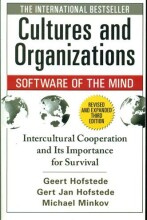Summary: Economy, Society, And Public Policy | 9781527243743
- This + 400k other summaries
- A unique study and practice tool
- Never study anything twice again
- Get the grades you hope for
- 100% sure, 100% understanding
Read the summary and the most important questions on Economy, Society, and Public Policy | 9781527243743
-
1 CAPITALISM AND DEMOCRACY: AFFLUENCE, INEQUALITY, AND THE ENVIRONMENT
-
1.1 Introduction
-
Which 3 factors raised the amount that could be produced in a day?
1. Technology
2. Specialization
3. Rise in capital -
What was a consequence of growing inequality access to growing affluence?
It led to social unrest and demands for a new political system: democracy -
What was a consequence of democracy?
Democracy brought greater political equality and usually reduced economic inequality -
1.1.1 A south African story
-
What economic changes have followed the abolishment of apartheid?
1. Social-eco changes -> acces to schools and healthcare, and more families had access to piped water and electricity
2. The nature of eco inequality changed: Difference between the major population groups declined (black and white) but inequality in these groups increased (e.g Ramaphosa who has a wealth of 700 million now) -
1.2.1 Measuring inequality
This is a preview. There are 1 more flashcards available for chapter 1.2.1
Show more cards here -
Threw which tool can we measure inequalities (threw different point in time, between different countries?
Threw statistics -
1.2.3 Inequalities within and between countries
This is a preview. There are 1 more flashcards available for chapter 1.2.3
Show more cards here -
What is the difference with a thousand years ago?
There were differences in income in different regions but no where near what we have now (so how did we get here? -> 1.3) -
1.2.4 Exercises
-
What do you think a "skyscraper" figure like figure 1.1 would have looked like in the 14th century?
I think the skyscraper figure still would have some inequalities within the country but much more equal between countries -
1.3 How did we get here? The hockey stick in real incomes
-
How did the world become so unequally distributed?
We have seen that some countries have taken of since the industrial revolution and that that was the major cause for the more unequal distribution -
1.3.1 Real GDP per capita: Measuring incomes at different times, and different places
This is a preview. There are 1 more flashcards available for chapter 1.3.1
Show more cards here -
What are 4 adjustments that we have to make to the GDP to make meaningful comparisons?
1. We need to divide total GDP by population, to derive GDP per capita
2. We need to correct for inflation (Real GDP)
3. We need to measure in the same units ($ dollar is most common)
4. We need to see what $1 buys you in the local shops (purchasing power parity or PPP for short) -
What is the advantage of GDP per capita? Statisticians have calculated
Statisticians have calculated it using the same rules for many countries, and over long periods of time
- Higher grades + faster learning
- Never study anything twice
- 100% sure, 100% understanding

































